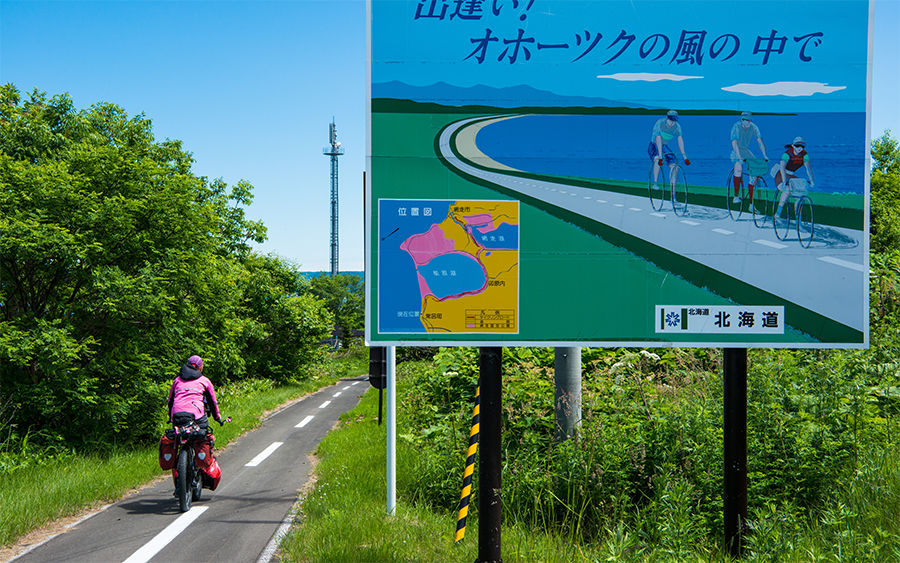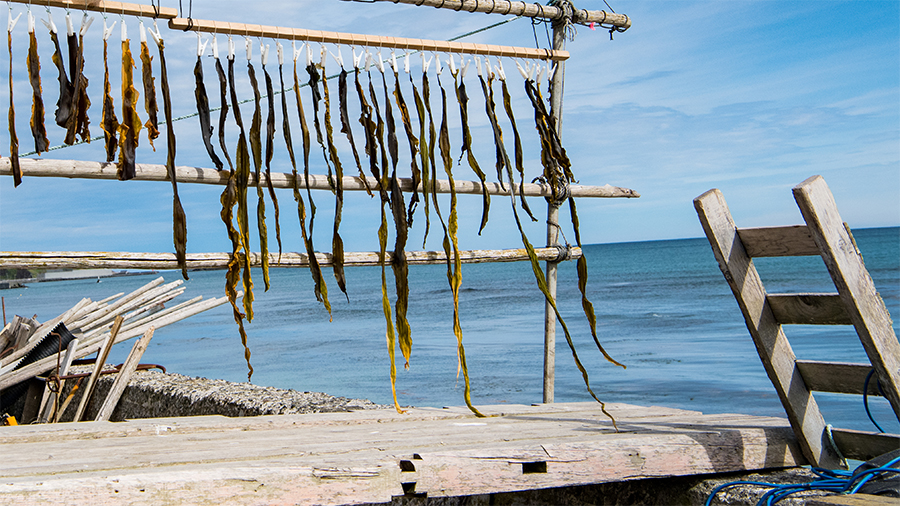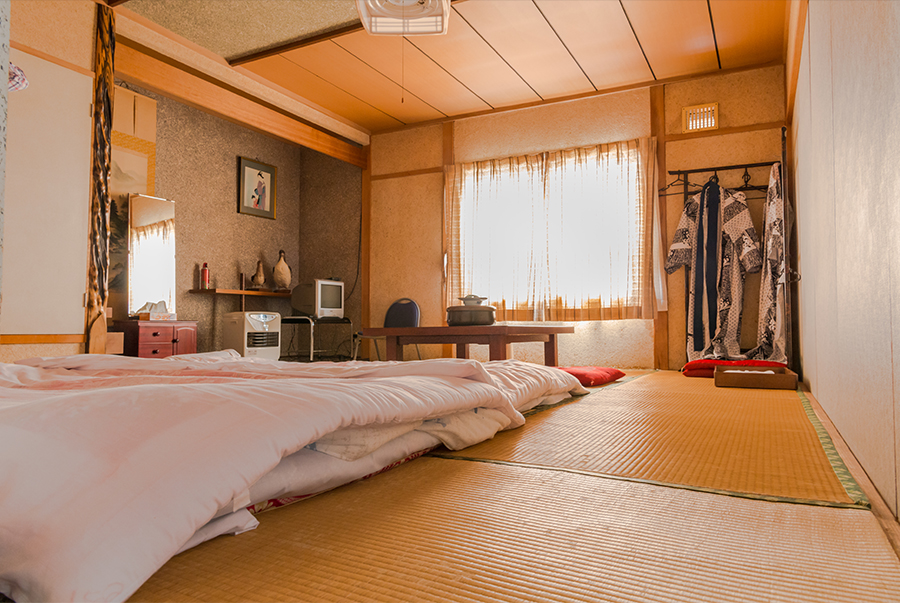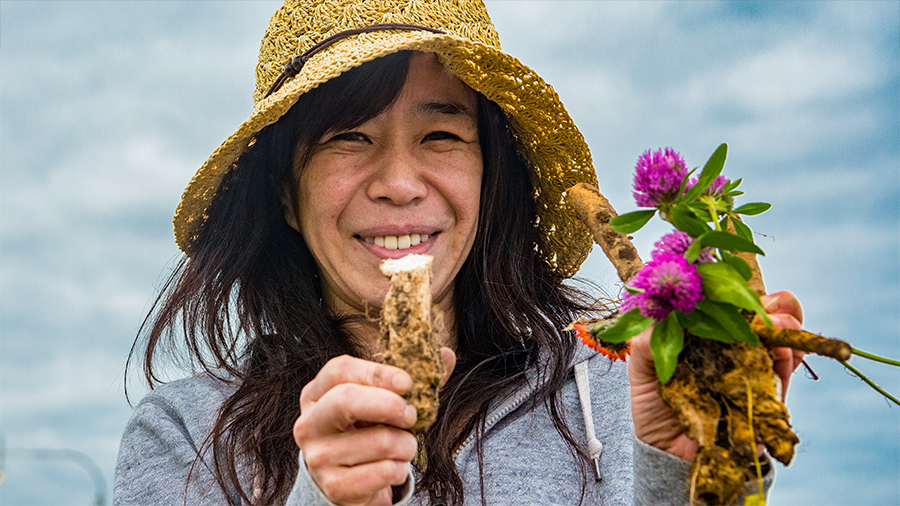The Summer of No Expectations
This story originally appeared in the June 2020 issue of Adventure Cyclist magazine.
“Are you okay?” Barbra leaned her bike against the railing in front of the school and jogged over to where I lay sprawled in mud and gravel, my right leg pinned beneath a heavily loaded bike.
“I’m okay, I’m okay,” I grumped as I freed myself and got to my feet. I clenched my jaw and we stood quietly for a moment, surveying the only road running through the bush village in the remote corner of Alaska we call home. Traversing a grand total of three rolling miles from the dirt airstrip where small bush planes land (the only practical way in and out of the village) to the boat landing on the river, the road in springtime is nearly always somewhere between the consistency of soup and stew in this rain-soaked part of the world. During wintertime, it’s generally either a series of mud wallows or sheathed in ice that redefines the word slick. Summer through fall, it’s a thoroughfare for one of the world’s densest populations of bears — coastal browns routinely topping 1,000 pounds. The last dedicated jogger in the village was killed by a pack of wolves on this road.
Training with a combination of weights, a treadmill, and a spinning cycle in our living room, we’d managed to get into pretty good shape over the winter and early spring. We felt ready, but …
“I don’t think we can do this,” I said.
“What? You mean not go to Japan?”
“No, no. We’ll go to Hokkaido. We already have the plane tickets. I just don’t think we can practice out here with our loaded bikes. When we get to the hotel in Chitose, I’m sure there’ll be a place where we can take a test spin. I guess we’ll find out then whether we can do this or whether we’ll need to pack up and get tickets home.”
Barbra took a moment to mull this over. “We should go with the philosophy I learned when I got into backpacking back in high school,” she suggested. “We shouldn’t have expectations. That was my teacher’s advice. Just give it a try and see where the journey takes you. It’s amazing what you can accomplish when you don’t have expectations.”

Although we come from very different backgrounds — Barbra is a California urbanite by way of Brooklyn, I’m from a small mountain town in Pennsylvania — we’d independently developed an overlapping list of dreams. Undertaking an extended bicycle tour was high on that list.
The main obstacle? Neither of us had ever ridden more than a few recreational miles on our townie bikes, and none of those excursions had included more than a water bottle, a couple of sandwiches, and maybe a jacket.
Fortunately, we knew where to begin in figuring out how to go about a self-guided trek. A visit to an Anchorage bike shop and discussions with the experts there made the learning curve manageable. After that, an assortment of books, magazine articles, online resources, and further discussions with our new friends at the bike shop led to the purchase of a pair of rugged touring bikes, a two-wheel trailer, and the necessary panniers, tools, safety equipment, camping gear, and cool, purpose-designed attire.
At this point, we were contemplating a trek of over two months’ duration, one in which we would cover more miles on bikes in a single summer than we’d covered in any previous 10 years combined. The big question was where?
Right off the bat, we eliminated destinations with consistently warm summertime temperatures. After living a few years in a place where the mid-40s seems balmy and where shorts and sandals come out once it hits the mid-50s, the kind of warm weather we used to bask in as Californians had become our kryptonite. We reasoned that we’d be facing plenty of challenges without adding climate acclimation to the list.

Several northern European countries, Mongolia (where we had previously lived for two years), and Alaska itself made our short list. But our research kept pushing the northern Japanese island of Hokkaido to the top. Factors included reports that we could expect Hokkaido to offer:
- Safety: we wouldn’t have to be overly concerned about our bikes and gear in campgrounds or when we stopped to do some hiking, sightseeing, or shopping.
- A bike-friendly culture with courteous drivers, ample shoulders on most highways, lots of dedicated bike paths, and walkways through most tunnels.
- Well-maintained roads.
- Clean, inexpensive campgrounds.
- A live-and-let-live attitude toward discrete wild camping.
- A World Heritage Site, six national parks, and additional quasi–national parks with excellent hiking and wildlife-viewing opportunities.
- A locavore’s paradise with markets and Michelin-noted restaurants, and a smorgasbord of world-class seafood.
- Bike shops: although we knew our bikes might confound Japanese mechanics, we reasoned that at least we wouldn’t end up boondocked in the middle of nowhere.
- Maybe even some decent fishing!
Another element pushing us toward Hokkaido was our fascination with northern cultures. From salmon-skin shoes to seal-oil lamps, there are innumerable parallels between traditional ways of life in Alaska and the ancient Ainu and Okhotsk cultures of Japan’s northernmost island. We wanted to learn more.
Of course, we reckoned a nearly summerlong tour of Hokkaido wouldn’t be all chrysanthemums and silk. It was hard to know how much to budget for food — and a little hard to believe that campsites would be as well appointed and cheap as we’d been reading. We had to brace ourselves for the Japanese idea of when the sun should rise (before 4:00 am from May 29 through July 3) and what that would mean in terms of photography, wildlife viewing, and getting breakfast given the disconnect between first light falling on our tent in the wee hours and most restaurants and stores not opening until much later.

But the most daunting aspect of planning a trek in Hokkaido didn’t lie with any of those issues. Language was our number one concern. While we figured we could probably get by with a combination of translation apps and the occasional English speaker we’d encounter, there’s no substitute for having some of the local language under one’s belt. Rosetta Stone to the rescue! Barbra’s full-time teaching duties (she’s the lone teacher for all of Chignik Lake’s elementary-school students) prevented her from devoting much time to studying, but after months of diligent practice, I felt ready enough.
It was a short van ride from Chitose International Airport to the Crown Plaza Hotel, our pre-trek staging destination where we’d given ourselves three days to put our bikes back together, search for fuel canisters for our stove, readjust our internal clocks, and explore Chitose. Three days turned out to be perfect.
Because we were amateurs to bike travel, it took us longer than expected to restore our rides to working order. In fact, when a Google search failed to provide necessary answers, we had to call back to the Anchorage bike shop for a bit of long-distance coaching. No one at the hotel was 100 percent sure where we could find the fuel canisters we were seeking so a bit of trial-and-error exploring was required before we discovered a Hokkaido-wide chain that proved to be a reliable source. The three-day cushion gave us time for our first gourmet dining experience: sumptuous bowls of curry ramen at a place within an easy walk of the hotel. We even had time to visit a local winery, enjoy a stroll and a picnic along the sun-dappled Chitose River, dig into our first sushi of the trip, and visit the Chitose Salmon Museum.
Meanwhile, without us even asking, the Crown Plaza staff immediately upgraded us to a larger room at no charge, provided us with locked indoor storage for our bicycles, and then agreed to store our huge bicycle boxes intact and stuffed with packaging foam until we returned in August, at no charge. Welcome to Japan!
Rested, ready, but not yet tanned, on the morning of June 1, we took the hotel elevator to the lobby, thanked the staff, and wheeled our bikes out to the parking lot.
“Well, we’re about to find out if this is doable!” I said to Barbra with equal measures of optimism and trepidation.
For the first time in our lives, we mounted up on fully loaded touring bikes (mine pulling a packed trailer) and pushed the pedals. To my great relief, not only did my bicycle move forward, it did so easily. We had already resigned ourselves to the prospect of pushing up hills, but on level surfaces pedaling through Japan wasn’t going to be a problem. After a lap around the parking lot, we pulled up parallel for a parley.
Back home in Chignik Lake, we’d created a huge map of Hokkaido on butcher paper, hung it on the wall next to our treadmill, and appointed it with photos and blurbs identifying things we wanted to experience. Pictures of rhinoceros auklets (Hokkaido boasts the world’s largest breeding colony of these unique sea birds), Blakiston’s fish owls, fields of flowers, festivals celebrating everything from sea urchins to fireflies, various bowls and plates of deliciousness Hokkaido is renowned for, museums, cityscapes, national parks, wineries, and even a picture of a frosty pint of blue beer adorned the map. We had also put together a loose itinerary. From January through May, as our research expanded, we added to the map and to the list, always with a counterclockwise route in mind. In fact, on May 31, the night before our departure from the Crown Plaza, we double-checked maps and confirmed our plans to begin the trip by heading east toward the vast wetlands of Kushiro-Shitsugen National Park. The idea was to get there early while the rare tancho, Japanese red-crowned cranes, would still be with their chicks.
To this day, neither of us knows why we changed the plan the next morning. Sitting astride our bikes in the hotel parking lot, one of us said, “Let’s go this way instead,” and the other said, “I was thinking the same thing!” Perhaps the decision harkened back to Mongolia where a vague memory tells us that we’d been instructed that the best way to outwit the vagaries of fate is to plan a trip in one direction but at the last minute head the opposite way.
A quiet, tree-shaded bike path followed the Chitose River 17 miles to its headwaters at Lake Shikotsu in Shikotsu-Toya National Park. Brightly plumaged Oriental greenfinches in viridescent shades of olive and splashed with bright yellow greeted the morning with high-pitched warbles from riverside willows. Fishermen — both in the form of elegant, long-legged gray herons and those wearing waders and wielding fly rods — stalked the water in search of trout and other fish. Butterflies floated across the path ahead of us, and flowers, both wild and in meticulously tended gardens, bloomed everywhere. As the morning sun climbed higher into the sky, the electric buzz of cicada song began to fill the air. It’s an iconic music of Japanese summers, and we almost felt as though we had pedaled into a setting from the movie My Neighbor Totoro. This was the Japan we had dreamed of touring, and we were here!

Save for a couple of brief stretches, the gently sloping series of bike paths and quiet roads to Lake Shikotsu was easily managed. Placing ourselves in a proper Zen frame of mind, the relatively infrequent pushing we had to do was pleasant. In fact, later in the trek the slower pace paid off with an adrenaline-inducing bear sighting we would surely otherwise have missed when a sow and her two cubs cautiously emerged from a thick stand of roadside bamboo.
Late that afternoon, we settled into our first campsite at Morappu campground along the pebbled shore of Lake Shikotsu. After a dinner featuring steaming hot bowls of udon with miso broth and tinned sanma (a mackerel-like fish Hokkaido is known for), we sat back in our camping chairs and took in the view. Before us, Lake Shikotsu was beginning to glass off, gathering and reflecting the sky and shoreline forest as the sun sank in the distance. Far out on the lake, the last diehard fishermen began pointing their boats back to shore. Behind us, a woodpecker softly drummed a hollow snag, and frogs began an evening chorus. The day had been warm, but as a twilight glow descended across the water, we were grateful for our warm hats, fleece, gloves, and jackets.
The old itinerary was history. The summer lay before us as wide open as Hokkaido itself. We looked forward to our new plan: to follow our noses and allow the summer to unfold with no expectations. Because, as someone once said, “It’s amazing what you can accomplish when you don’t have expectations.”
Nuts & Bolts: Hokkaido, Japan
Arrival
New Chitose Airport, south of Sapporo, is the main entry point. Plentiful hotels, restaurants, supermarkets, bike shops, and hardware stores make Chitose an ideal place to stage.
Climate and Topography
Think coastal Oregon: cool temperatures even in mid-summer, some wind, some rain. Hokkaido’s mountains are relatively easy to negotiate, but you’ll encounter tunnels, some over a mile long. Be certain to have front and rear lights and reflectors.
Camping
Campgrounds are plentiful, clean, quiet, and usually inexpensive (sometimes free). Expect tidy restrooms, a place to wash dishes, and not much more. You’ll be happy you toted along camping chairs. In towns, you’ll find coin laundries and onsens (public bath houses).
Riding Conditions
Roadways are generally excellent. Many feature bike lanes. Courteous drivers, numerous restrooms, and English signage make for easy traveling.
Food
Stove fuel canisters are available at Homac hardware stores throughout the island. But don’t hesitate to leave your cookware at home: convenience stores and supermarkets offer an array of reasonably priced, tasty, ready-to-eat foods from sandwiches to sushi. And be sure to try Hokkaido’s sofuto kur?mu soft-serve ice cream. It’s amazing.
Language
Try to learn some Japanese, but otherwise make patience, politeness, and appreciation your bywords. The Hokkaido culture is much more laid-back and less rule-bound than most of the rest of Japan. Ask gently. You may be permitted allowances and access not “in the book.”

